Discrimination between Earthquakes and Explosions Using Artificial Neural Networks?
Mostafa Allameh Zadeh* and Mohsen Farrokhi
Seismology Department, The International Institute of Earthquake Engineering And Seismology, Iran
*Address for Correspondence: Mostafa Allameh Zadeh, The International Institute of Earthquake Engineering And Seismology, Iran, Tel: + 989-128-697-535; E-mail: [email protected]/ [email protected]
Submitted: 014 February 2018; Approved: 29 May 2018; Published: 30 May 2018
Citation this article: Zadeh MA, Farrokhi M. Discrimination between Earthquakes and Explosions Using Artificial Neural Networks. American J Biom Biostat. 2018;2(1): 011-017.
Copyright: © 2018 Zadeh MA, et al. This is an open access article distributed under the Creative Commons Attribution License, which permits unrestricted use, distribution, and reproduction in any medium, provided the original work is properly cited
Keywords: Discrimination, Earthquakes, Explosions, Artificial Neural Networks (ANN), supervised classification
Download Fulltext PDF
This paper introduces the Artificial Neural Networks (ANN) function to model probabilistic dependencies, in supervised classification tasks for discrimination between earthquakes and explosions problems. ANNs are regarded as the discriminating tools to classify the natural seismic events (earthquakes) from the artificial ones (Man-made explosions) based on the seismic signals recorded at regional distances. The bulk of our novel is to improve the obtained numerical results using this advance technique. The ANNs, by testing the different types of seismic features, showed the potential application of this method to discriminate the classes. During the above study, we found out that the Neural Networks have been used in a fully innovative manner in this work. Here the ARMA coefficients filters detects the type of the source whenever a natural or artificial source changes the nature of the background noise of the seismograms. During the above study, we found out that this algorithm is sometimes capable to alarm the further natural seismological events just a little before the onset.
Introduction
Neural networks have received much attention in seismological research and geosciences in recent years. Artificial Neural Networks (ANN) have been shown to powerfully realize solutions to problems in pattern recognition, database retrieval and offer important new approaches to information processing because of their adaptability and ability to learn. The term neural network is used to describe various topologies of highly interconnected simple processing elements that offer an alternative to traditional methods of computing.
The idea of a neural network was originally conceived as an attempt to model the bio physiology of the brain, i.e. to understand and explain how the brain operates and functions. Neural net models are specified by a net topology, node characteristics, and training or learning rules. These rules specify initial set weights and indicate how weights should be adapted during processes to improve performance. Four options must be made in the design of a supervised network training application: the input and output structures, hidden layer structure, the unit activation function, and the network training algorithm. These models are composed of many nonlinear computational elements operating in parallel and arranged in patterns reminiscent of biological neural nets. Computational elements or nodes are connected via weights that are typically adapted during use to improve performance. The potential benefits of neural nets extend beyond the high computation rates provided by massive parallelism. Adaptation or learning is a major focus of neural net research.
The knowledge in an ANN is encoded in the hundreds of interconnecting weights. For example consider a trained network, an ANN which has learned to solve a problem correctly for all the elements in the training set. The first layer, the input layer, accepts the individual components of the input vector and distributes them to all the units of the next layer. After that each of the units of hidden layer computes a weighted sum of the received inputs and performs a nonlinear squashing operation and then distributes its output to each of the processing elements of the output layer. The exact architecture of an ANN is highly problem dependent and the number of hidden units is usually based on some ad hoc rules of thumb [1].
In recent years, several papers have been published on using neural networks to distinguish natural earthquakes from man-made events [2-4]. Artificial Neural Networks (ANN) is one of the outstanding methods for handling classification problems by learning from examples. ANN can be used for feature extraction as well as for the classification task itself and can extract non-trivial features with large discriminative power and discover highly non-linear structures in the signal space. In addition, ANNs are capable of forming disconnected decision regions and thereby operate as discriminators and clusters simultaneously.
Used autocorrelation estimates of the records as the training set for the Multi-Layered Perceptron (MLP), for discrimination between earthquakes and chemical explosions [5-7]. Neural classifiers can form complex, highly nonlinear, and disconnected regions in the feature space of classes with significant overlaps. On the other hand, recent developments of the neural network classifiers indicate that they are useful for solving many difficult seismological problems in discriminant analysis and pattern classification with powerful theoretical support [8]. Neural classifier can form complex, highly nonlinear, and disconnected regions in the feature space of classes with significant overlap [9].
The MLP to discriminate earthquakes from Underground Nuclear Explosions (UNE) [8]. They used spectral amplitudes of the picked windows as a training database for the neural network. They applied MLP to the classification of chemical explosions and earthquakes, based on the spectral ratios Pn/Sn and Pn/Lg [10]. Applied a frequency-slowness seismic image as the input to a neural network, to discriminate between earthquakes and nuclear explosions. Allameh Zadeh and Nassery in 1999 used discriminant parameter filter coefficients and band limited spectral ratios with Multi-layer Perceptron (MLP).
In this paper, some source parameters, Signal to Noise Ratio and Signal Complexity discriminant are used based on Gaussian ARMA Coefficients in Supervised (GCS) technique for seismic discrimination problems and introduce capability of MLP as an online classifier [11-12].
Selection of Events
The first stage of the identification is to classify a seismic event into one of the two classes: natural earthquakes and man-made events, mainly chemical explosions.
The explosion database used in this study was extracted from 26 explosions and 31 earthquakes records by the U.S. Geological Survey-National Earthquake Information Center (NEIC). In figure 1 location and path of wave is shown. For short-period displacement records, the vertical components of p-waves are used. For each explosion events, we have selected a single station, preferably at a distance of about 10 degrees as shown in (figure 1). The earthquakes and explosions are somehow in the same area.
Pre-Processing of The Raw Data
The preprocessing stage is a critical process that performs a transformation from data space into a feature space to remove redundancy from recorded signals. The following pre-processing steps have been performed: In the first step, (1) instrumentation correction was performed on all of the input records, based on the given instrument frequency response or pole zero diagram. In order to extract suitable features from the P-wave, each record was filtered through 0.5-6 HZ band using a fourth-order band-pass Butterworth filter, and finally the appropriate lengths of windows for the P-waves were identified; In the next step, feature extraction (parameterization) and classification by artificial neural nets was applied [13].
Discovering reliable seismic discriminants for a given purpose is usually difficult because it requires long-term gathering of expert knowledge, and the automation of feature extraction can become a rather complicated problem [14]. This is especially true for events recorded at long distances that are related to the energy release of the event through a complex functional relationship. The elastic and anelastic response characteristics of the propagation paths, and the response characteristics of seismometers, are undesired effects that usually fade the inherent source properties of seismometers [15].In this paper complexity factor was computed by relation of Energy of P-coda wave’s energy (10-30 seconds after arrival of P waves) to P wave’s energy (8 seconds after arrival of P waves) at a distinct frequency band with center frequency of 1, 2, 3, 4, 5 Hz (Figure 2). Signal to noise (S/N)ratio was determined by root mean square of noise window before arrival of P waves as shown in the (Figure 3). At the end source parameters (corner frequency, slope, and constant level on spectrum of P wave) were determined as shown in (Figure 4).
The values of the Signal complexity and S/N spectra sampled at 5 frequency band as well as source parameters were used in the processing stage (13 features in 2 separate groups).
After Calculating 13 Parameters we checked if these features could help us in discriminating process. With investment of this feature we conclude that for these dataset the Signal to noise feature do not help in discriminating process and what which seems good in the discriminating process were Signal complexity and corner frequency at 5 frequency band (Figure 5).
Armax Coefficients Determination
Detection and classification problems in seismology are to discriminate natural events include mainly: Tectonic to Volcanic Earthquakes and artificial events (like underground nuclear explosions, mine blast, underwater explosions, Military Explosions).
In the seismologic literature, most of the work on seismic signal classification is based on parametric statistical models. Extraction or estimation of the model parameters, usually require an action of an analyst, which is time consuming and imposes difficulty on the automization of the procedure.
Neural networks are a type of adaptive computing system that can learn from data and generalize from stored knowledge to produce appropriate outputs in response to new data. An interesting illustration of the application of Artificial Neural Network to seismic signal discrimination is given by Dowla et al for development mathematical models like non-parametric pattern classifiers, non-linear filters and cluster algorithms. In this work, Backpropagation three-layer network was used for training with a learning rate (0.1) and consist of simple quadratic processing elements (figure-3), called quadratic neurons, interconnected by links associated with numeric coefficients or weights indicating the strength of each connection [6]. ARMA coefficients in Supervised can form complex and non-planar decision surfaces between populations with significant overlaps.
Neural networks are suitable for seismic signal problems with the following characteristics;
• Non-linearities, Find a nonlinear function in feature space that will separate the earthquakes from explosions.
• Dimensionality Reduction; for example, large number of input parameters in learning sets.
• Noisy data due to weak local events, it is well known that extracting useful information from seismic noise polluted records. Especially when we deal with small magnitude events is a difficult task in seismic signal processing.
• Problem dependence on the various seismic source mechanisms and No known mathematical algorithm to determine the changing media or environment conditions.
Abiodun et al used ANN for determining ARMA coefficients and they showed the results perform better than some of the existing method of ARMA coefficient because of the non-linearity nature of ANN.
In this article, we report ARMAX coefficient potential application to seismic signal classification by using ARMA coefficient is shown in (figure 3). In the most general sense, a quadratic neuron is described as a quadratic form defined in the input space, whose numeric value for an input can be positive or zero, depending on the position of that input point [16].
Experimental results on several data sets indicate that the proposed weighting scheme outperforms other popular classifier combination schemes, particularly on problems with complex decision boundaries. Hence, the results indicate that local classification-accuracy-based ARMA coefficient techniques are well suited for decision making when the classifiers are trained by focusing on different regions of the input space.
Compatibility with standard statistical techniques, higher speed of classification is the main advantage of employing such networks. The available data have been divided into a training set and testing with Leave-One-Out strategy because the training set is small.
Pre-Processing and Feature Extraction
The preprocessing stage is a critical process that performs a transformation from data space into a feature space to remove redundancy from recorded signals; the following pre-processing has been performed. In the first step, instrumentation correction was performed on all of the 90 input records, based on the given instrument frequency response or pole zero diagram. In order to extract suitable features from the P-wave, each record was filtered through 0.5-4 HZ band using a fourth-order band-pass Butterworth filter, and finally the appropriate lengths of windows for the P-waves were identified. In the final step, feature extraction (parameterization) and classification by artificial neural nets was applied. Discovering reliable seismic discriminants for a given purpose is usually difficult requires long-term gathering of expert knowledge, and the automation of feature extraction can become a rather complicated problem. Especially those recorded at far distances are related to the energy release of the event through a complex functional relationship. The elastic and anelastic response characteristics of the propagation paths, and the response characteristics of seismometers, are undesired effects that usually fade the inherent source properties of seismometers, are undesired effects that usually fade the inherent source properties of the records.
Classification Results and Accuracy Measurments
We experimented on two large databases of Earthquakes and Explosions characters, namely, the Explosions database collected by the USGS-NEIC and a database collected by the International Institute of Earthquake Engineering and Seismology (IIEES). We used ARMAX coefficients samples (first 20 and last 20) from each class for testing and the remaining samples of each class for training. The explosions database contains 36 samples of Semipalatinsk and Chinese test site. We used 20 samples from each class for training, and the remaining samples of each class for testing.
We used the ARMA and ARMAX coefficients for classification on candidate classes selected by a two-level prototype classifier. For both earthquake and explosions databases, we tested ARMAX coefficients with 50 eigenvectors per class on linear subspace of variable dimensionality learned by Leave-One-Out strategy. The test error rates on the database using ARMAX on subspace of variable dimensionality. The error rate of ARMAX without dimensionality reduction is 0.92%, which is inferior to with dimensionality reduction. We can see that compared to dimensionality reduction by ARMA coefficient, the ARMAX coefficients improve the accuracy significantly. On 60-D subspace, the error rate was reduced from 0.87% to 0.67%. We can see that on subspace learned by either ARMAX gives lower error rates than the ARMA.
For application in seismology, the predictive power of a result is of utmost importance. The decision surface generated by the methods described must be tested on an independent data set to determine their effectiveness in reaching accurate decisions. Four measures are often used in discrimination problem applications to measure accuracy; Sensitivity (Number of positive cases correctly classified (Pc) / Total number of positive cases (Pt)), Specificity (Number of negative cases correctly classified (Nc) / Total number of negative cases), Positive predictive value (Total number of positive cases / (Pc+Ni)) and Accuracy = (Pc+Nc)/(Pt+Nt).
This provides a good measure of confidence in the classification and ARMA coefficient develops an approximation to the decision regions of each class. Our implementation augments the standard ARMA coefficient method by adding conscience mechanism forces the processing elements assigned to each pattern class to distribute themselves within the pattern space. It adaptive capabilities allow it to be used in problems in which there is little apriority knowledge of pattern class distributions. In this study, ARMAX by using ARMA coefficient has been used for seismic signals analysis in a completely different manner than the previous networks, this system is employed here to generate a dynamic piecewise model for the seismic signal according to the latest information derived from it.
The network has been used in a fully innovative manner in this work and detects the type of the source whenever a natural or artificial source changes the nature of the background noise of the seismograms, the structure of ARMAX by using Neural Networks is depicted in (figure 3), The input, a hidden and output layer of this network contains 8, 4 and 1 neurons, respectively. The application of this system in seismic signal discrimination is also through the simulated experiments; the model can be a proper discriminator of the earthquakes from the explosions.
It should be noted that the sample size was small and each method was evaluated by the Leave One Sample Out method. For a sample size of n, the training is done with n-1 samples, and the remaining sample is then classified and checked for accuracy. The method is repeated until all samples have been used as the test. In general, this method will produce higher accuracy than dividing the data into a training set and a test set.
The second column of table 1 shows the number of clusters found (for the first two methods) or reached (for the last method) by each of the algorithms. The error rates are derived for each case and the average numbers of the iterations are also given in columns of (Table 2).
Table 3 shows the complete experimental results of using the characteristics curves as a discriminator. In this Table, the ratio of accuracy is varied to reach the best rate of correct classification. Each cell of the table shows the ratio of the number of correct classified events to the total number of the events in percents.
When the ratio of accuracy is increased while the length of windows from P-wave memory is relatively small, the error increases due to the non-precise ARMAX by using ARMA coefficient prediction and consequently improper data clustering by it. On the other hand for higher lengths of ARMA coefficient memory and low accuracy ratios, the ARMA coefficient may get trapped in the local minimums that increase the probability of error. The results shows that the length of 12 for ARMA coefficient in Supervised memory with accuracy = 0.95 yields the best classification rate (0.81).
Results
The discrimination of small earthquakes from explosions based on the seismic signal recorded at regional distances is an important and difficult task. In this paper, we have shown the potential application of ARMA coefficient to perform discrimination between earthquakes and explosions. The ARMA coefficient has been used for seismic signals analysis in a completely different manner than the previous networks. In fact, ARMA coefficient is employed here to generate a dynamic piecewise model for the seismic signal according to the latest information derived from it. This study is based on the fact that just some moments before most of many natural earthquakes onsets, the earth interior activities can affect the seismogram characteristics in ARMAX coefficients filter. These pre-event changes may sometimes be used as the precursors for the further seismological events. For ARMA coefficient is a good measure of confidence in the classification with classification error was between 10% and 25%.
The results obtained so far indicate that there is considerable justification for using ARMAX coefficients with Neural Networks) to discriminate between natural earthquakes and artificial events.
Classification Results
In this study, the discriminating process was done using three layers MLP. The input, a hidden and output layer of this network contains 6, 4 and 2 neurons, respectively.
In case of having too few hidden units, high training error and high generalization error will be achieved, due to under fitting and high statistical bias. If we have too many hidden units, may get low training error but still have high generalization error due to overfitting and high variance So determination the number neurons in the hidden layer is important. As shown in Figure 6 the number of hidden layer was determined using a training, validation, and test set of data consist of 70% , 10% o and 20% of all dataset respectively. The training and validation will be used for training process of Neural Network and test set is used to check the performance of dataset for an unknown dataset with different number of hidden layer. Then, with respect to simplicity and performance of the network the number of neurons determined. As the initial weight of neurons is determined randomly, we do training of any network (with distinct number of hidden layer) for 10 times and the best performance selected and average.
After determination of number of hidden layer, the next processing step is to train the network with data set. It should be noted that the sample size was small and each method was evaluated by the Leave One Sample Out method or Leave K-Out. For a sample size of n, the training is done with n-1 samples (or n-k samples for Leave K-Out), and the remaining sample is then classified and checked for accuracy as a test set. The method is repeated until all samples have been used as the test data set. In general, this method will produce higher accuracy than dividing the data into a training set and a test set. Another Problem is that our initial weights are chosen randomly and neural network’s result may be trapped in a local minimum. That is, better and more stable results will be achieved, if the training for a dataset repeats more one time, and the result can be averaged to get mean performance of the network.
(Figure 7) shows the experimental results of our Neural network as a discriminator of earthquakes from explosions, the complexity matrix and ROC curves which show the performance of classifier is shown in figure 8.
This Network can discriminate these two classes with 96.2 % and 96.8% of whole dataset for explosions and earthquakes, respectively and an accuracy of 96.5% of the whole dataset.
Conclusion
The discrimination of small earthquakes from explosions based on the seismic signal recorded at regional distances is an important and difficult task. In this paper, P and P-coda seismic signals have been used to classify the artificial events (explosions) from earthquakes. Detailed results of classification have been presented by using ANNs and the accuracy of classification has been shown based on the Signal Complexity and corner frequency coefficients. For a Multilayer Perceptron (MLP) network used in this study, a good measure of confidence was achieved and classification error (misclassification) was between 2% and 5%.
The results obtained so far indicate that there is considerable justification for using corner frequency and Signal complexity with MLP to discriminate between natural earthquakes and artificial events and we propose to use ANN for discrimination processes stead of usual Pattern classification methods.
Our analysis described below indicates that the evolution of ARMA coefficients using ANNs can also provide an effective anomaly between earthquakes and explosions. The method that we propose is sensitive enough to detect abnormal variations of the seismic signals before the arrival of the P-waves.
The shallow focal depth of underground nuclear explosions and source spherical symmetry lead to strong destructive interference between the down-going ARMA coefficients curve reflected from the Earth’s surface (pP phase). The experimental results for MLS classification for 34 earthquakes and 36 explosions are shown none-miss-class for earthquake and one miss-class for explosion. Autocorrelation, Shank, Prony, Pade and Covariance methods are in below.
- Bishop CM. Neural Networks for Pattern Recognition. Oxford university press. 1996.
- Edoardo Del Pezzo, Anna Esposito, Flora Giudicepietro, Maria Marinaro, Marcello Martini, Silvia Scarpetta. Discrimination of earthquakes and underwater explosions using neural networks. Bull seis soc am. 2003; 93: 215-223. https://goo.gl/fJmBfz
- Yu V Fedorenkoab, Eystein S Husebyea, Bent O Ruuda. Explosion site recognition: neural net discriminator using single three component stations. Phys earth planet interiors. 1999; 113: 131-142.
- Scarpetta S, Giudicepietro F, Ezin EC, Petrosino S, Del Pezzo E, Martini M, et al. Automatic classification of seismic signals at Mt. Vesuvius volcano, Italy, using neural networks. Bull seis soc am. 2005; 95: 185-196. https://goo.gl/875CbD
- Bitto J, Magotra N, D Hush, E Chael. Seismic event discrimination using neural networks, in Proceeding of the 23rdAsilomar conference on Signals, Systems, and computers, Pacific grove, California. 1989; 356-330.
- Allamehzadeh M, Nassery P. Application of quadratic neural networks to seismic signal Classification, physics of the earth and planetary interiors. 1999; 113: 103-110. https://goo.gl/wjHQSE
- Hush DR, Horne BG. Progress in supervised neural networks: what’s new since Lippmann? IEEE Signal Processing Magazine. 1993;10: 8-39. https://goo.gl/Gn4Apd
- Dysart P S, Pulli J J. Regional Seismic Event classification at the NORESS Array: Seismological measurements and the use of trained neural networks. Bull Seis Soc Am. 1990; 80: 6. https://goo.gl/sJ8BZt
- Kohonen, T. The self-organizing map: Proceeding of the IEEE. 1990; 78: 1464-1480. https://goo.gl/cDpiq7
- Alexander S S, Hsu R, Banmgardt DR. Identification of earthquakes and explosions using pattern recognition techniques on frequency-slowness seismic images. EOS. 1992; 73-360.
- Arora S K, Basu T K. A source discrimination study of a Chinese seismic event of May 4, 1983. Tectonophysics. 1984; 109: 241-251. https://goo.gl/HmXPhM
- Taylor S R, D N Anderson. Rediscovering signal complexity as a teleseismic discriminant. Pure Appl Geophys. 2009; 166: 325-337. https://goo.gl/VFEiPT
- Kim W Y, Simpson DW, Richard PG. Discrimination of earthquakes and explosions in the Eastern United States using regional high-frequency data. Geophysical research letters. 1993; 20: 1507-1510. https://goo.gl/Y3muKm
- Der Z A, McElfresh TW, Donnell AO. An investigation of the regional variations and frequency dependence of anelastic attenuation in the mantle under the Unites States in the 0.5-5 HZ Band. Geophysical journal. 1982; 96: 67-100. https://goo.gl/aXczK3
- Der Z A, A C Less. Methodologies for estimating t (f) from short period body waves and regional variations of t (f) in United States: Geophysical journal. 1985; 82: 125-140. https://goo.gl/1P5SEo
- Allamehzadeh M, C Lucas. Mo prediction using artificial neural networks modeling, in Proceeding XXV general assembly of the European Seismological Commission (ESC). 1995; 1907-1916.
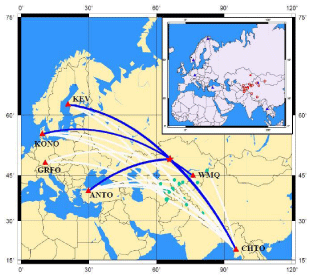

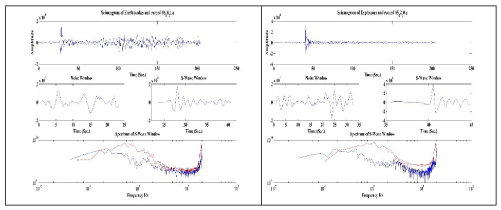
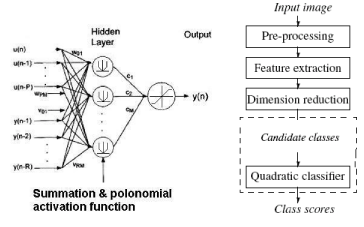
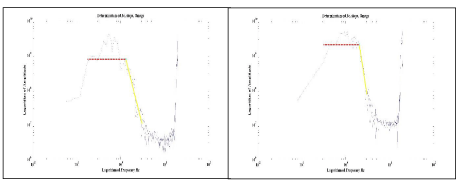
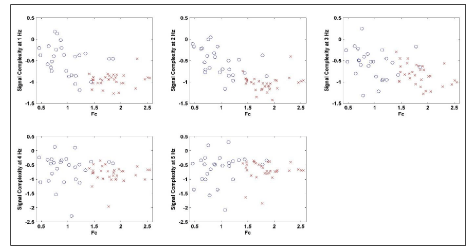
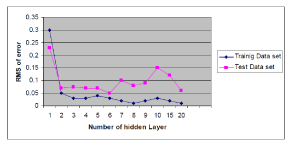
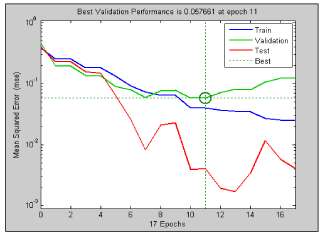
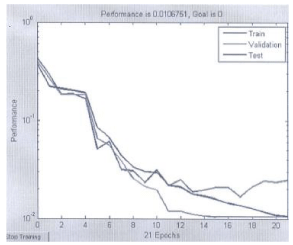

Sign up for Article Alerts